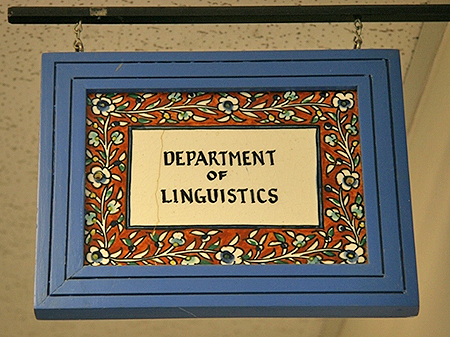
Linguistics ETDs
Publication Date
5-1-2011
Abstract
Research in the field of Formulaic Language has shown it to be a very diverse phenomenon in both the form it takes and the functions it performs (e.g., Erma and Warren, 2000; Wray, 2002). The proposal made by Sinclair (1991) states that language as a system is organized according to two principles, the idiom principle', which includes the use of all multi-word prefabricated sequences, and 'the open choice principle,' which covers word-for-word operations. Formulaic language is the embodiment of the idiom principle and constitutes the core of linguistic structure. Therefore, it must be subjected to scientific scrutiny from the variety of perspectives \u2013 typological, psycholinguistic, socio-pragmatic, and language acquisition. This dissertation reports on the percentage of formulaic sequences - prefabs - in spoken and written Russian; the distribution of prefab types across two spoken and four written genres, and their interaction with non-prefabricated language and the impact that prefabs have on the structure of a particular language type. Russian is the language typologically and structurally different from English. The main structural difference between English and Russian is that the Russian language has a free word order, wide inflectional system to code grammatical relations, and a satellite verb system. I hypothesize that these structural differences influence the quantity and the nature of formulaic sequences used in the language, the nature of alternation of prefabricated and non-prefabricated strings, and the preference of the speakers for one rather than the other aforementioned principles. The method applied in the analysis of Russian prefabs is developed by Erman and Warren (2000) and originally was applied to the analysis of the English texts. This dissertation seeks to address a methodological issue of applying this method to typologically different languages. It has been argued (Garcia and Florimon van Putte, 1989) that the fixedness of the English word order contributes to the co-occurrence of elements and the formation of formulaic sequences in English. In this case, formulaic language becomes a language-specific tendency pertaining to English, and not a universal mechanism for language storage, processing, production and use. The findings support the usage-based approaches driven by forces resulting from the frequency of use, discourse and communicative functions, grounded in the fine balance between the economy principle and the power of language creativity. The results of the study are used to draw implications for language processing and language modeling. As we continue to perfect the methods of identification, classification and analysis of formulaic sequences, we will be in a better position to describe not only the amount but the nature of formulaic language, its interaction with non-formulas, and the impact this alternation has on the linguistic structure as a whole. The current study investigates the nature of formulaic language in a free word order language. We seek to apply the method of identification, classification and analysis of prefabs, its interaction with each other and with non-formulaic language, as well as the estimation of choices made in producing spoken and written language. My dissertation results suggest that a free word order language uses at least as many prefabs as a fixed word order language. On average, in a free word order language like Russian 65% of spoken and 58% of written language is composed of multiword formulaic sequences. The results strengthen the hypothesis that the idiom principle is a mechanism of global linguistic organization and processing. The proportion and distribution or prefabs is less affected by language type than by spoken written medium distinction and genre variation. In addition, the results show that prefabs are frozen structures not amicable to standard syntactic transformations even in a free word order language. The results support the dual system of language processing, i.e., holistic and analytic, present in a free word order language.
Language
English
Keywords
prefabs cognitive grammar syntax Russian formulaic language
Document Type
Dissertation
Degree Name
Linguistics
Level of Degree
Doctoral
Department Name
Department of Linguistics
First Committee Member (Chair)
Axelrod, Melissa
Second Committee Member
Wilcox, Sherman
Third Committee Member
Gorbet, Larry
Fourth Committee Member
Dinwoodie, David
Recommended Citation
Stukova, Natalya. "The Role of Formulaic Language in the Creation of Grammar." (2011). https://digitalrepository.unm.edu/ling_etds/33

Comments
Submitted by stukova@unm.edu (stukova@unm.edu) on 2011-02-24T19:45:06Z No. of bitstreams: 1 Natalya Stukova Final Dissertation.pdf: 1384783 bytes, checksum: ebbdd1591f2710f8d7dbe4772e02f567 (MD5), Approved for entry into archive by Doug Weintraub(dwein@unm.edu) on 2011-07-02T16:03:41Z (GMT) No. of bitstreams: 1 Natalya Stukova Final Dissertation.pdf: 1384783 bytes, checksum: ebbdd1591f2710f8d7dbe4772e02f567 (MD5), Made available in DSpace on 2011-07-02T16:03:41Z (GMT). No. of bitstreams: 1 Natalya Stukova Final Dissertation.pdf: 1384783 bytes, checksum: ebbdd1591f2710f8d7dbe4772e02f567 (MD5)